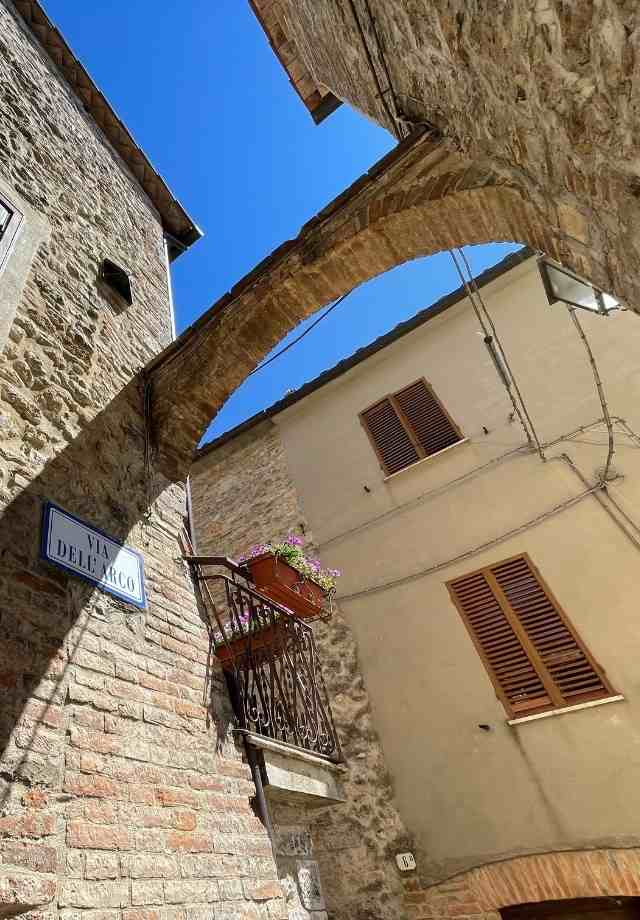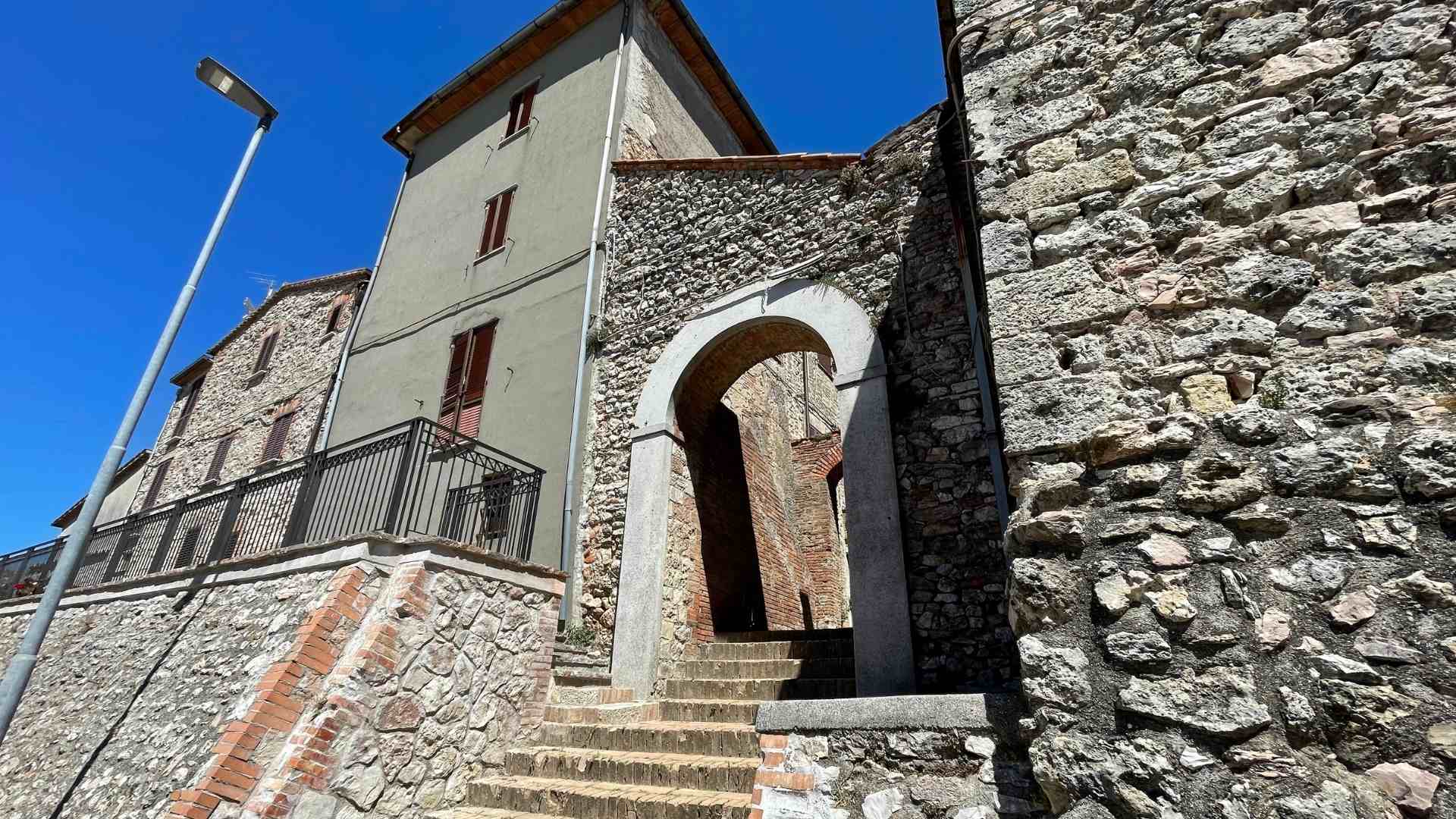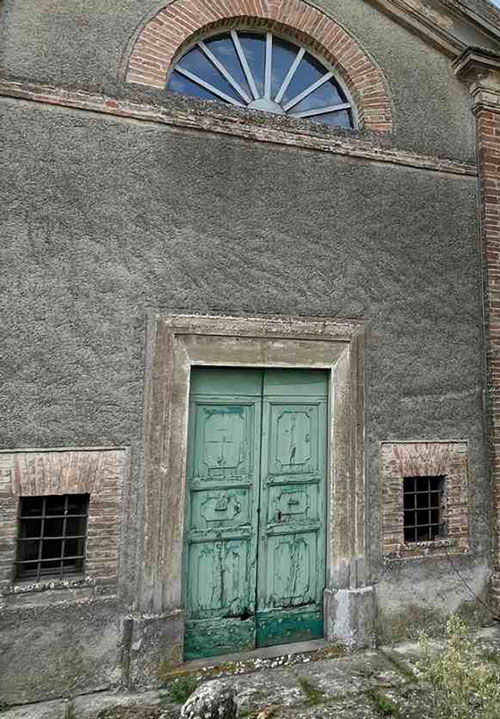
punto di interesse
point of interest


Dunarobba, once a castle along the Via Amerina, today it is a pretty village in Umbria that in its territory preserves so much history and many stories to discover. First of all the one linked to a unique naturalistic site in the world: the Fossil Forest.
According to the tradition the name derives from the gens Dunnia, a Roman family who received this territory in the first century BC with the redistribution of land to veterans following the Battle of Philippi by Octavian, future Augustus. Others derive the name from the Lombard word Duna which meant “stuff”.
As a matter of fact the town was built at the time of the Arnolfi and was destroyed by Narni, during the war with Todi, along with other castles between 1284 and 1285.
Linked since 1290 to the events of the Church of San Vittorina – to which it referred, because of Todi, along with 18 other castles and villas – when in the sixteenth century the Pieve lost its importance, the castle was equipped with a drawbridge to assure protection to its inhabitants independently.
It was involved, in the second half of the fifteenth century as the castles around, in the fierce battles between the two families of Todi: the Chiaravalle, lords of the Castle of Canale and the Atti owners of Castle of Sismano.
Nel 1816, tornata sotto la dominazione dello Stato Pontificio, dopo essere assegnata a Todi e Amelia, passò a Montecastrilli formatisi da poco come comune.
Pretty bizarre is the legend of Donna Ursina Gregorio’s daughter who lived in the early seventeenth century. The story wants that she used to manage, with magic words and potions prepared by herself to cure ailments considered incurable at the time.
We do not know how effective these findings were, certainly Ursina drew wealth and fame from them but without ever being condemned, as happened at the time – and as happened to Matteuccia of Ripa Bianca, burned alive in the fifteenth century in the square of Todi – of witchcraft.

Dunarobba, once a castle along the Via Amerina, today it is a pretty village in Umbria that in its territory preserves so much history and many stories to discover. First of all the one linked to a unique naturalistic site in the world: the Fossil Forest.
According to the tradition the name derives from the gens Dunnia, a Roman family who received this territory in the first century BC with the redistribution of land to veterans following the Battle of Philippi by Octavian, future Augustus. Others derive the name from the Lombard word Duna which meant “stuff”.
As a matter of fact the town was built at the time of the Arnolfi and was destroyed by Narni, during the war with Todi, along with other castles between 1284 and 1285.
Linked since 1290 to the events of the Church of San Vittorina – to which it referred, because of Todi, along with 18 other castles and villas – when in the sixteenth century the Pieve lost its importance, the castle was equipped with a drawbridge to assure protection to its inhabitants independently.
It was involved, in the second half of the fifteenth century as the castles around, in the fierce battles between the two families of Todi: the Chiaravalle, lords of the Castle of Canale and the Atti owners of Castle of Sismano.
Nel 1816, tornata sotto la dominazione dello Stato Pontificio, dopo essere assegnata a Todi e Amelia, passò a Montecastrilli formatisi da poco come comune.
Pretty bizarre is the legend of Donna Ursina Gregorio’s daughter who lived in the early seventeenth century. The story wants that she used to manage, with magic words and potions prepared by herself to cure ailments considered incurable at the time.
We do not know how effective these findings were, certainly Ursina drew wealth and fame from them but without ever being condemned, as happened at the time – and as happened to Matteuccia of Ripa Bianca, burned alive in the fifteenth century in the square of Todi – of witchcraft.

The castle, the village, the High Fortress and then the Pieve di San Vittorina and the Fossil Forest: Dunarobba and its territory are small pearls between history and nature to be discovered at the slow pace of the green nature that dresses and surrounds them.
The historic center of Dunarobba, a small jewel made of alleys and leaning houses, preserves the geometric structure of the castle, the remains of the walls with loopholes, one of the medieval access doors and two of the towers.
Just outside the walls we find: the new parish Church of San Giuseppe Lavoratore, built in 1961, and the Church of the Madonna delle Grazie, built around the effigy of the Madonna originally placed on an aedicule of the seventeenth century.
About a kilometer from the historic center, on the SP37 towards Montecastrilli, you can enjoy a place that preserves over 2.5 million years of history and nature: the Fossil Forest of Dunarobba, with the possibility of visiting the Forest; at the Museum of Plant Paleontology which also preserves the finds of Grotta Bella; all’Arboretum made from trees and plants that reconstruct the habitat of time; and the Pietro Gauli Centre.
At about 3 km – taking the SP37 then turning onto the SP39 towards Sismano, and after 2 km turning right onto a dirt road – you will find the suggestive Parish Church of San Vittorina, unfortunately today under renovation, but that between the thirteenth and sixteenth centuries was the main reference of 19 castles and villas, including those of Montecastrilli and Avigliano.
Always at 3 km – but turning not to the right but to the left going up the word Fortezza – placed on a hill to look on one side Dunarobba and on the other the ancient Via Amerina, stands the fairytale bulk of the High Fortress, structure of the fifteenth century, today a historic residence, which preserves the features of the stronghold as it was built by the Vici family.

The castle, the village, the High Fortress and then the Pieve di San Vittorina and the Fossil Forest: Dunarobba and its territory are small pearls between history and nature to be discovered at the slow pace of the green nature that dresses and surrounds them.
The historic center of Dunarobba, a small jewel made of alleys and leaning houses, preserves the geometric structure of the castle, the remains of the walls with loopholes, one of the medieval access doors and two of the towers.
Just outside the walls we find: the new parish Church of San Giuseppe Lavoratore, built in 1961, and the Church of the Madonna delle Grazie, built around the effigy of the Madonna originally placed on an aedicule of the seventeenth century.
About a kilometer from the historic center, on the SP37 towards Montecastrilli, you can enjoy a place that preserves over 2.5 million years of history and nature: the Fossil Forest of Dunarobba, with the possibility of visiting the Forest; at the Museum of Plant Paleontology which also preserves the finds of Grotta Bella; all’Arboretum made from trees and plants that reconstruct the habitat of time; and the Pietro Gauli Centre.
At about 3 km – taking the SP37 then turning onto the SP39 towards Sismano, and after 2 km turning right onto a dirt road – you will find the suggestive Parish Church of San Vittorina, unfortunately today under renovation, but that between the thirteenth and sixteenth centuries was the main reference of 19 castles and villas, including those of Montecastrilli and Avigliano.
Always at 3 km – but turning not to the right but to the left going up the word Fortezza – placed on a hill to look on one side Dunarobba and on the other the ancient Via Amerina, stands the fairytale bulk of the High Fortress, structure of the fifteenth century, today a historic residence, which preserves the features of the stronghold as it was built by the Vici family.

Discover nearby points of interest:
Reach The Fossil Forest of Dunarobba
Reach The Castle of Sismano
Reach the remains of The Parish Church of San Vittorina
Or:
[Avigliano Umbro and its territory- link a itinerario]
discover all the points of interest of the village
Information, appointments and travel proposals on:
The Progressive Web App is part of the project “Le Terre dei Borghi Verdi”, realized in collaboration and with the contribution of Regione Umbria – Assessorato al Turismo
©2021 Le Terre dei Borghi Verdi
Le Terre dei Borghi Verdi
Welcome in Southern Umbria,
where the slowness becomes value
Information, appointments and travel proposals on:
The Progressive Web App is part of the project “Le Terre dei Borghi Verdi”, realized in collaboration and with the contribution of Regione Umbria – Assessorato al Turismo
©2021 Le Terre dei Borghi Verdi